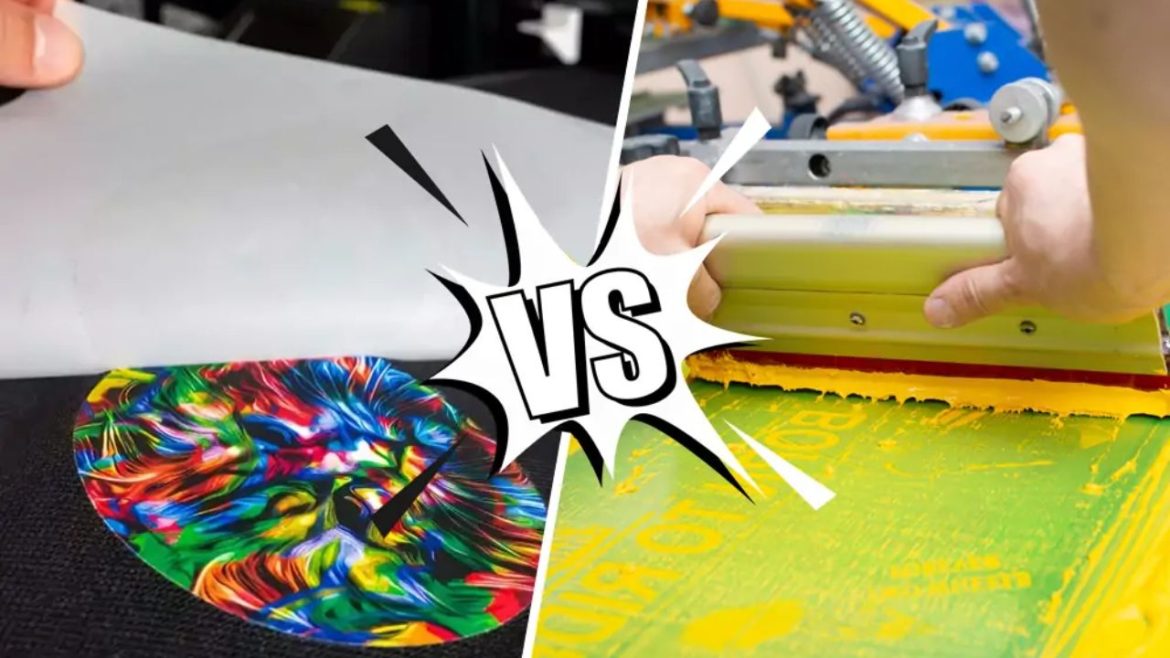With the evolution of the printing industry, the businesses and the creators are always on the lookout to intensify or advance their branding, product presentation, and customization processes. A uv dtf printing is a good and popular way to create high-quality labels, as is traditional label printing. Although these two techniques are effective, each of them introduces something new to the table and is appropriate to different requirements, usages, and creative pursuits. Knowing the main differences between UV DTF and traditional label printing, businesses will make specialized decisions regarding the outcomes that need to be attained.
An Overview of Traditional Label Printing
Conventional label printing is not a new story, as it has been in existence in different industries to package, brand, or do information labeling. It involves adhering printed designs on sticky types of label materials such as paper or films, which are used on surfaces through peel-and-stick processes. Examples of process in this category are flexographic, offset, and digital printing. Conventional label printing has a reputation of efficiency, particularly during large-scale output, and the various options include compatibility with vast selections of materials and tints. The technique provides regularity, clear detail, and a range of lamination choices, which is good-looking for stock product labeling and high-volume packaging production.
UV DTF Printing On the Rise
The advantage of UV DTF printing instead is a novel way of thinking and provides a totally different level of flexibility and surface compatibility to the labeling scene. UV DTF means Ultra Violet Direct-to-Film print. At this, the designs are printed in several layers, i.e., glue, white ink, color ink, and varnish, on a special release film. A transfer film is then printed over the printed area and cured by the use of ultraviolet light. The pattern may be applied to a huge range of surfaces and peeled off to leave a bright, long-lasting graphic on the surface.
This is a new technology whereby one can transfer the image onto a curved, textured, or uneven surface without necessarily printing the image on the surface of the object. It leaves the opportunity of creative options when it comes to personalizing tough materials like glass, metal, ceramic, plastic, leather, and wood.
Surface Versatility and Methods of Application
Among other memorable differences between UV DTF and conventional label printing is the level of compatibility with the surface. Standard labels mostly have a flat or slightly curved surface where clean application of adhesive labels can be done. Such types of labels are normally cut into a given shape and size and are then hand applied or automated by using machines to place them on containers, boxes, bottles, among other packaging.
UV DTF printing has a greater success in the use of high-quality images on a much wider variety of materials and on various shapes. UV DTF transfers stick so there is no requirement to laminate or heat-treat the design, regardless of its shape, whether curved or irregular cylindrical tumblers, cosmetics packaging, or promotional items of whatever shape. The design is applied continuously to the surface, with the design at times having a dimensional texture, and is highly durable.
Customization and Flexibility in Production
As far as customization is concerned, UV DTF printing has a special feature of fitting small-batch production and individualization. This is very useful to any kind of business that sells personalized gifts, limited edition products, or even boutique branding. Cutting dies of dies as well as adhesive labels are not required; hence, the manufacturing process is simplified, and fast design modification can be done.
The high-volume approach is demonstrated by more conventional label printing technology, especially the flexographic or offset process. It is a good process for large volumes with a consistent label design and therefore low-cost in large volumes. In this type of label printing, there is also an amount of customization, even on the small-scale/short-run label applications through digital label printing.
Conclusion
UV DTF and the traditional label printing have significant applications in contemporary printing. Although the traditional technologies are time-proven, with their time-based reliability and volume scalability, the UV DTF printing has brought about a new level of customizability, aesthetics, and usability of materials. Companies may use this knowledge of all the strong points of each of these methods to find the solution that suits them in terms of branding, the level of production, and creative objectives the best. As the printing technology further develops, the combination of the two ways of developing will additionally improve the packaging of the products, appearance, and market symbolism.
